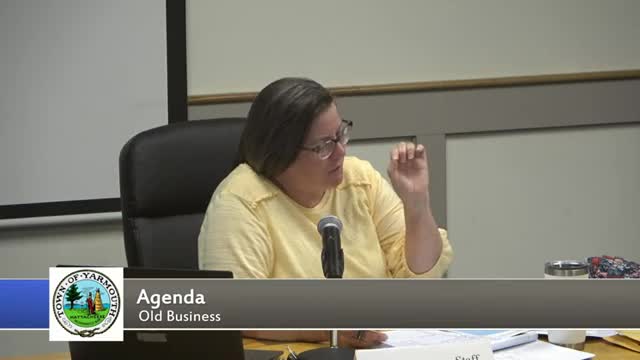Affordable housing debate sparks urgent accessibility discussions
July 08, 2024 | Town of Yarmouth, Barnstable County, Massachusetts

This article was created by AI summarizing key points discussed. AI makes mistakes, so for full details and context, please refer to the video of the full meeting. Please report any errors so we can fix them. Report an error »

In a recent government meeting, officials discussed the pressing need for accessible affordable housing in the community, highlighting the complexities of meeting both affordability and accessibility standards. The conversation centered around the Fair Housing Act's requirements, which stipulate that developments with five or more units must include affordable housing options. However, the specifics of accessibility—such as the inclusion of fully accessible units with features like roll-in showers and wider doorways—remain a challenge.
Participants expressed concerns about the current demand for accessible units, noting that many remain unfilled due to a lack of applicants needing such accommodations. This has led to discussions about the feasibility of requiring developers to make a certain percentage of affordable units accessible, with some suggesting that this could lead to an oversupply of accessible units that do not meet demand.
The meeting also touched on the importance of incorporating safety features during construction, such as blocking for grab bars in bathrooms, which could be easily adapted later. The officials acknowledged that while there is a desire to create more accessible housing, the actual need within the community is not fully understood, prompting a call for further research into demand.
Additionally, the meeting addressed the broader context of affordable housing initiatives, including updates on a housing bond bill currently under negotiation, which proposes significant funding for housing development and infrastructure improvements. The discussion underscored the ongoing efforts to balance the needs of various populations, including those with disabilities, while navigating regulatory frameworks and community preferences.
As the meeting concluded, officials agreed to continue exploring these issues, emphasizing the importance of understanding community needs and ensuring that new housing developments are both affordable and accessible.
Participants expressed concerns about the current demand for accessible units, noting that many remain unfilled due to a lack of applicants needing such accommodations. This has led to discussions about the feasibility of requiring developers to make a certain percentage of affordable units accessible, with some suggesting that this could lead to an oversupply of accessible units that do not meet demand.
The meeting also touched on the importance of incorporating safety features during construction, such as blocking for grab bars in bathrooms, which could be easily adapted later. The officials acknowledged that while there is a desire to create more accessible housing, the actual need within the community is not fully understood, prompting a call for further research into demand.
Additionally, the meeting addressed the broader context of affordable housing initiatives, including updates on a housing bond bill currently under negotiation, which proposes significant funding for housing development and infrastructure improvements. The discussion underscored the ongoing efforts to balance the needs of various populations, including those with disabilities, while navigating regulatory frameworks and community preferences.
As the meeting concluded, officials agreed to continue exploring these issues, emphasizing the importance of understanding community needs and ensuring that new housing developments are both affordable and accessible.
View full meeting
This article is based on a recent meeting—watch the full video and explore the complete transcript for deeper insights into the discussion.
View full meeting
